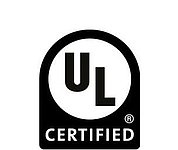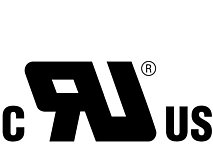UL Certification
The UL mark is one of the most well-known quality symbols in the world and is considered a reliable proof of the safety of the product used by consumers. Anyone who wants to export their products to the USA or Canada cannot avoid UL certification. Unlike the CE marking, the UL mark is not legally required. In practice, however, due to UL's close involvement in extensive standardization processes and its long-standing establishment, it is nearly impossible to sell electronic devices without UL certification.
The certification deals with electromechanical safety to prevent fires and personal injuries. The UL mark serves as proof that the product has been tested by UL and meets the applicable standards and requirements regarding potential risks of fire, electric shock, and mechanical hazards. Therefore, UL approval is practically mandatory for the import of industrial goods into North America. Machinery and plant manufacturers are well advised to ensure that the components they use are appropriately certified. If a product does not have a UL certificate, insurance coverage may even lapse, adding an additional risk. In this article, we explain what UL certification entails and highlight the differences in the certification process.
What is the Significance of UL Certification?
The UL mark signifies that a product complies with the safety regulations of the USA and Canada. It focuses on products, materials, components, devices, and systems. The certification is issued by Underwriters Laboratories (UL), an independent organization founded in 1894, headquartered in Northbrook, Illinois, USA. For Europe and Latin America, the central contact point is UL International Germany GmbH in Neu-Isenburg near Frankfurt. Here, a representative sample of a product is tested and certified to ensure it meets all applicable standards and requirements.
At LQ, we have consistently relied on comprehensive certification for our products for several years. For example, all connectors in the X-TEC 15 series, power cables in the W-TEC 15 series, and even our A-TEC functional modules are UL certified. We also ensure adequate UL certification for our system solutions based on customer requirements. With components and system solutions from LQ, machinery and plant builders are always on the safe side.
The UL mark on a product indicates that the manufacturer continually adheres to the applicable standards. It is important to note that UL does not approve products but merely tests whether they meet specific requirements. Underwriters Laboratories is the only independent organization authorized to issue the UL mark as certification. Each year, around 20 billion products worldwide are equipped with the UL safety mark. Unlike the Canadian Standards Association (CSA) norm, where products are certified only for export to Canada, products that meet UL standards are recognized in both Canada and the USA. Different types of UL marks are distinguished, and we have listed the most common UL marks below.
Various UL certifications UL Recognized & UL Listing

UL Listed Mark
The UL Listed mark is one of the most commonly used UL certifications. It is the official proof that UL has tested a representative sample of the product and confirmed its compliance with UL’s applicable safety requirements. These safety requirements are based on the safety standards developed and published by UL. This UL mark can be found on products such as small appliances, computers, ovens, heaters, fuses, smoke detectors, fire extinguishers, sprinkler systems, life vests, bullet-resistant glass, and many other products.

Recognized Component Mark
Consumers rarely see the Recognized Component mark. It is used for components that are part of a larger product or system. These components may be partially inaccessible or the product is incomplete when installed. The mark can be found on switches, power supplies, circuit boards, industrial control devices, and thousands of other parts. Since a Recognized Component does not constitute a complete product, there are specific requirements for its recognition.
Additional Classification Marks
UL Classification Mark:
The UL Classification mark appears on products that UL has evaluated for specific properties to eliminate risks and confirm usability under certain conditions. Typical products bearing the UL Classification mark include building materials and industrial equipment, diving suits, fire doors, firefighter protective gear, and industrial vehicles.
UL Mark for Functional Safety:
The UL mark for functional safety is awarded to products that have been evaluated for both the UL Listed mark and functional safety. Functional safety refers to the part of safety that depends on the correct functioning of safety-related control systems and software. Typically, the use of the functional safety mark is limited to products used in applications involving functional safety.
On-Site Inspections:
The On-Site Inspections mark is given to products that have been tested directly at the installation site rather than in UL’s laboratories or at the manufacturer’s production site. If a product has been significantly modified since its manufacture or lacks third-party certification marks, the building owner, relevant regulatory authority, or any other person involved with the product's use can request UL to inspect the specific equipment directly at the installation site. A qualified inspector (AHJ: Authority Having Jurisdiction) will then grant or deny UL approval following a thorough inspection.